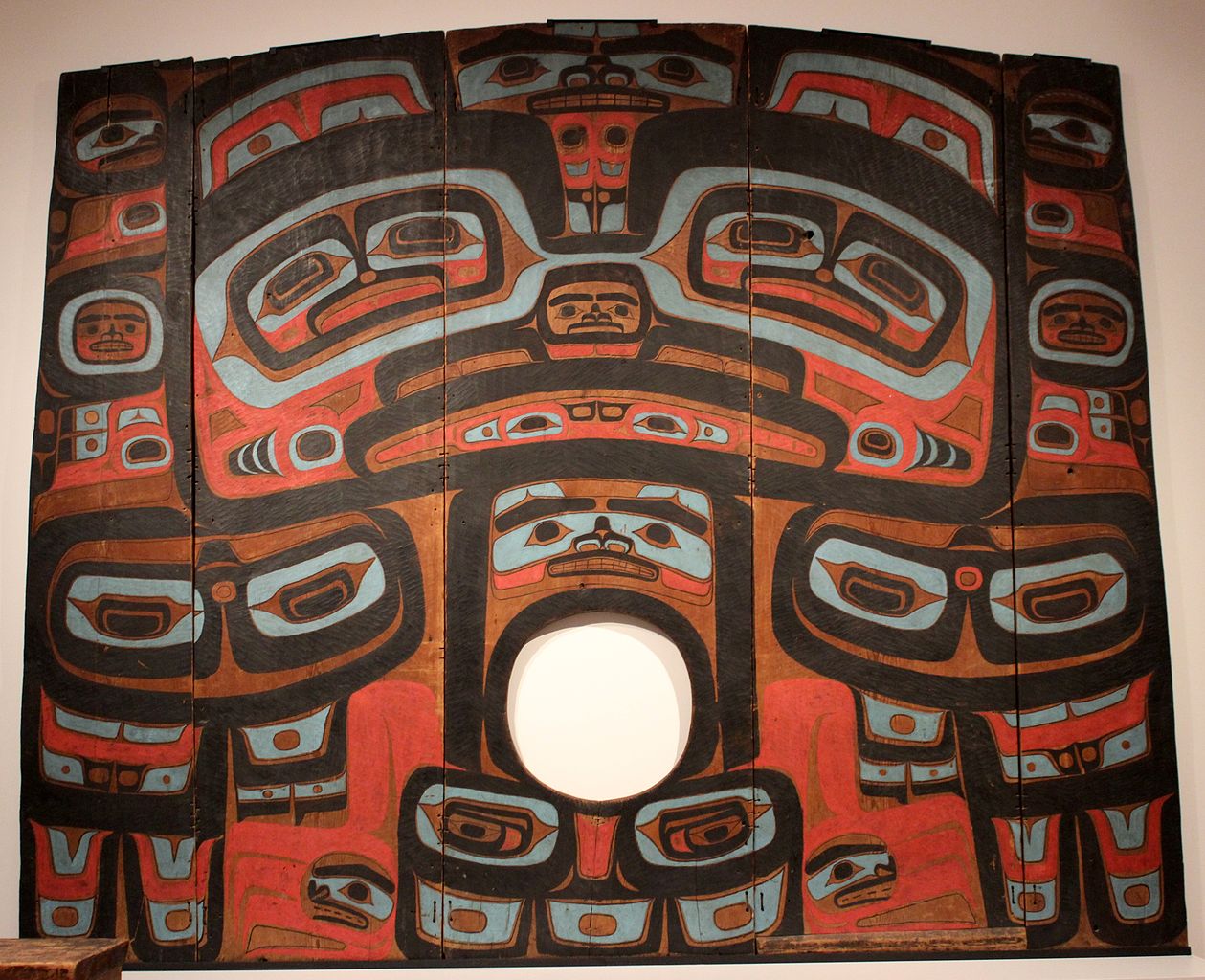
06 Jul Raven Stamp Celebrates Tlingit Culture
This month, the United States Postal Service will be unveiling the ”Raven Stamp” featuring artwork created by Tlingit and Athabascan artist Rick Lanáat’ Worl. This is the first stamp designed by a Tlingit artist and illustrates the creation story of the Raven and the Box of Stars. It also celebrates the culture of the Tlingit people native to the southeast Alaskan coastal region. The release will be marked by a ceremony at the Sealaska Heritage Institute on June 30th.
Stories of the Raven, a clever trickster, have been passed down from generation to generation in Tlingit culture. Worl’s stamp depicts the Raven stealing celestial bodies from a wealthy man, who had been hoarding their light for himself. By taking human form as the hoarder’s grandson, the Raven deceived him. That enabled the Raven to release the sun, moon, and stars through the house’s smoke hole into the heavens, where everyone could enjoy them.
In a statement published on the Sealaska Heritage Institute website, Worl described how he wanted to depict a moment of panic, as the Raven was changing from human back to bird form as he was trying to open the box of stars. It’s a moment Worl described as familiar and frightening to most of us, “…on the cusp of between accomplishment and failure.” Worl also addressed the significance of being an indigenous artist, and the first Tlingit artist, to have their artwork featured on a postage stamp:
“I hope that as a designer I can represent on a national scale the modernity of Native people — that we’re engaged in modern culture while still carrying forward our traditional heritage.”
The artwork for the Raven stamp was created in the distinctive Northwest formline system, characterized by ovoid shapes and varying widths of lines they round corners. Webs of form lines are used to create complex paintings of creatures and designs. The system is a part of living southeast Alaskan indigenous culture and is common to the Tlingit, Haida, and Tsimshian peoples.
Tlingit Yéil X’eenh (Raven Screen), ca. 1810, at the Seattle Art Museum. Photo by Miguel Hermoso Cuesta. Creative Commons Attribution-Share Alike 4.0 International

Worl has been instrumental in passing on Tlingit culture and in bringing the traditional arts into a modern context. He developed the art department at the Sealaska Heritage Institute, which is a tribal non-profit dedicated to perpetuating the Tlingit, Haida, and Tsimshian cultures and promoting cross-cultural understanding. He continues to teach fundamental skills at the Institute. With his sister Cynthia, Worl also runs Trickster, a business selling products featuring his and other indigenous artists’ designs. The business aims to introduce traditional artwork modern products, empower native artists, and present indigenous culture as part of a modern lifestyle.
It was one of Trickster’s products that led to the creation of the Raven stamp. USPS art director Antonio Alcalá became aware of Worl’s work when he came across a Trickster basketball at the Smithsonian gift shop. He told Native News Online, “What caught my eye was their contemporary take using traditional subject matter.”
While this is the first artwork created by a Tlingit designer that has appeared on a USPS stamp, this is not the first time for Tlingit culture – or the Raven for that matter. In 1996, Tlingit artist Nathan Parker was featured on their Native American Dancers stamp series. The stamp shows a depicts Parker, a nationally recognized woodworker, metalsmith, and dancer, doing the Raven Dance. Both Parker and Worl are members of the Raven (Yéil) moiety or descent group.
Stamp image provided by the U.S. Postal Service via AP.
